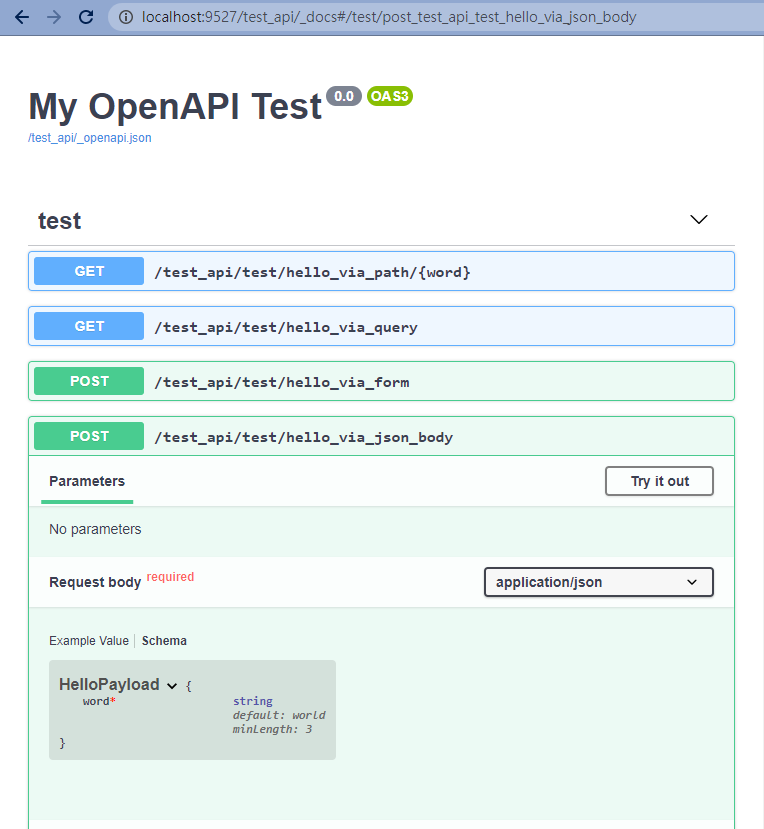A minimal FastAPI implementation in Python2 + Django without pydantic
I'm a big fan of FastAPI. It's elegant and saves lots of doc maintaince & API spec communication costs for me.
But FastAPI needs Python3 to run, some legacy projects I maintained are still using Python2 and built by Django framework. It would take 2 migration steps (Python 2 to 3 and Django to FastAPI) for moving them onto FastAPI framework.
So I decided to build a minimal FastAPI implementation in Python2 + Django, that I could instantly get the benefits from FastAPI without too many migrations on my legacy projects.
People who like the way FastAPI works but
- Are still on the long migration process from Python2 to Python3
- Or don't want to do full system rewrite from Django to FastAPI
- Or don't want to upgrade from Python2 to Python3
- Auto OpenAPI schema/document generation from Python function parameter
- Auto HTTP request parameter validation from Python function parameters
- Python 2/3 compatiable, you could use almost the same code for you Python2/3 projects
pip install django-openapi
Click the button below and launch a free live demo server via Gitpod
If the button doesn't show up, you clould also use below link directly
https://gitpod.io/#https://github.com/tokikanno/django-openapi
After Gitpod launched, if you see a dialog like this, just hit the Open Browser button then you will get to the quick intro live demo server.
Use ctrl + p (or cmd + p if u're using MacOS X) and search for intro.py to see the source code of intro demo server.
- Import
OpenAPIfromdjango_openapi - Create an API object instance
- Add API object into urlpatterns
# import OpenAPI from django_opeanapi
from django_openapi import OpenAPI
# create an API object instance
api = OpenAPI(title='My OpenAPI Test', prefix_path='/test_api')
urlpatterns = [
api.as_django_url_pattern() # Add API object into urlpatterns
]- Start you django debug server and open your browser with url like
http://localhost:8000/test_api/_docs, this is the auto document page. - Now let's try adding some basic routes for you API
from django_openapi import Path, Query, Form
@api.get('/test/hello_via_path/{word}', tags=['test'])
def hello_via_path(word=Path()):
return {'hello': word}
@api.get('/test/hello_via_query', tags=['test'])
def hello_via_query(word=Query()):
return {'hello': word}
@api.post('/test/hello_via_form', tags=['test'])
def hello_via_form(word=Form()):
return {'hello': word}- Reload your browser & see if anything changed to the auto document page
- Advanced routes via JSON body & JSON schema object
from django_openapi import Body
from django_openapi.schema import BaseModel, StringField
class HelloPayload(BaseModel):
word = StringField(default_value='world', min_length=3)
@api.post('/test/hello_via_json_body', tags=['test'])
def hello_via_json_body(payload=Body(HelloPayload)):
return {'hello': payload.word}- Reload agagin, the auto document page now should have 4 APIs on it.
Browse to the demo folder for more advanced samples.
- More documents and samples
- Better schema validation error message handling
- More advanced field types (e.g.: EmailStringField, CommaSeparatedArrayField ...)


